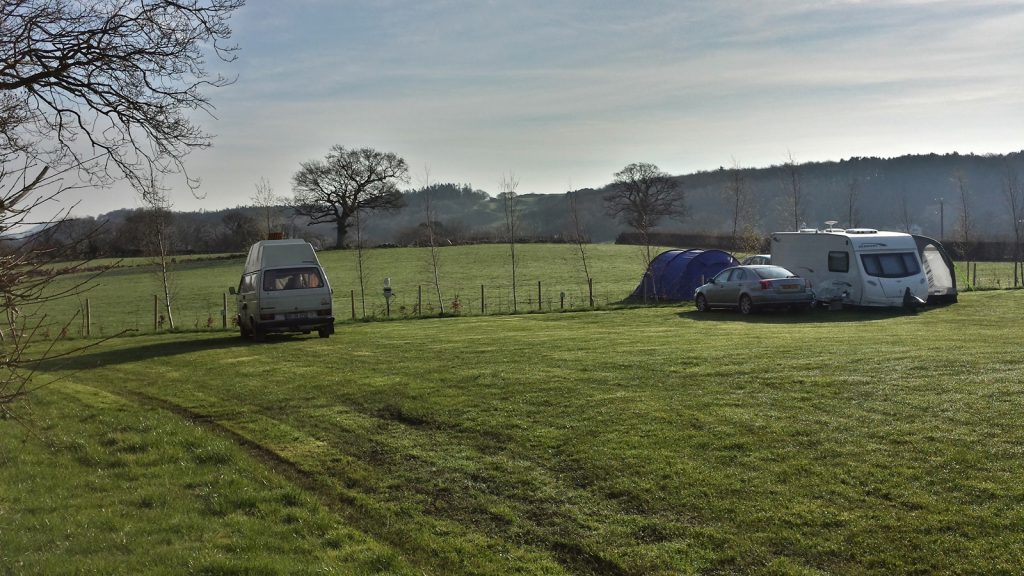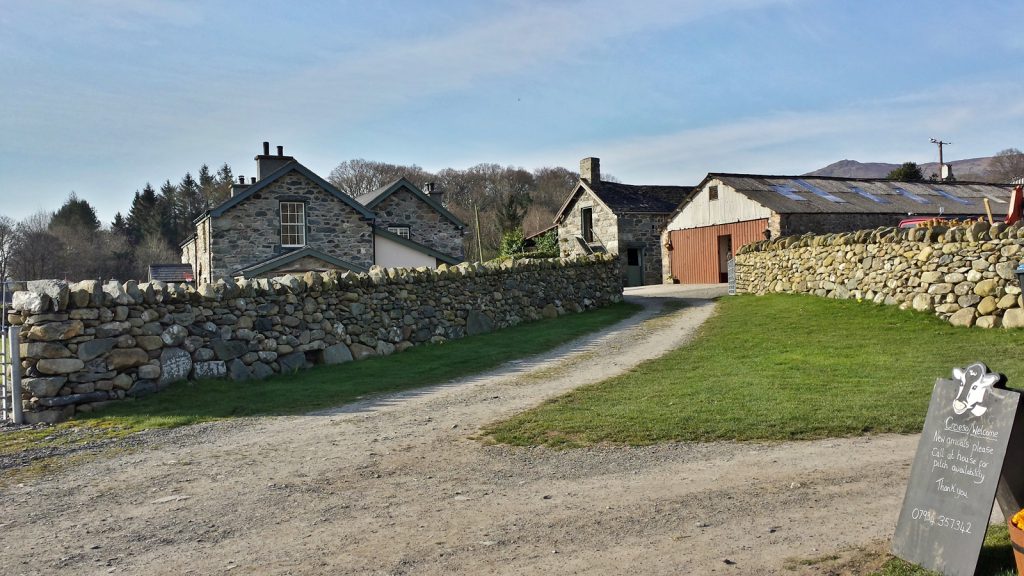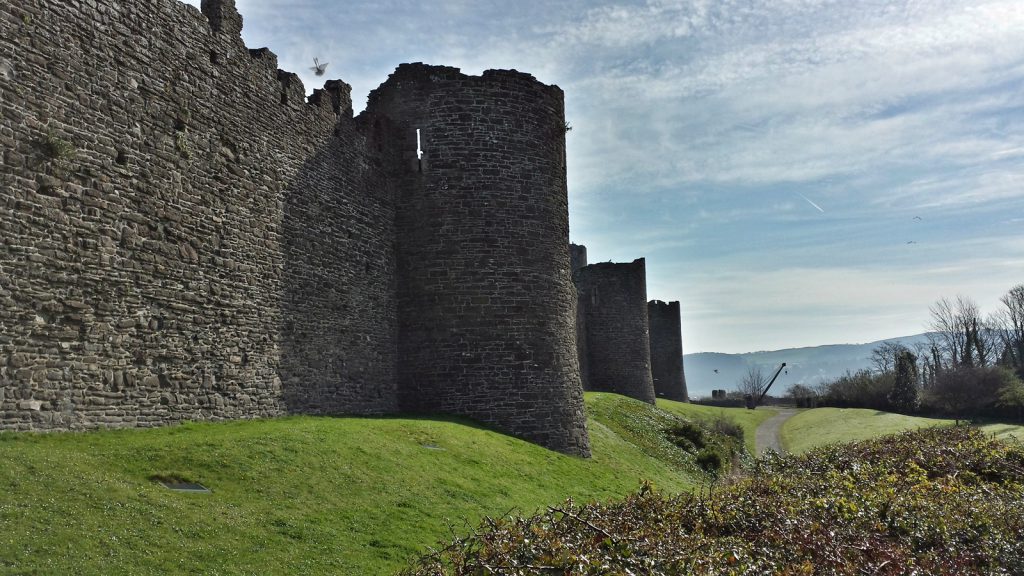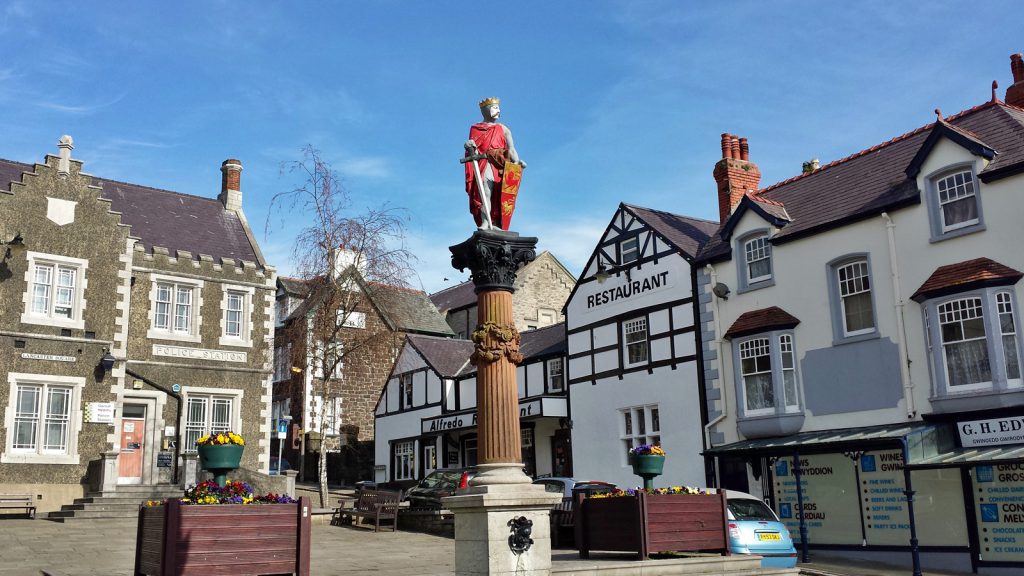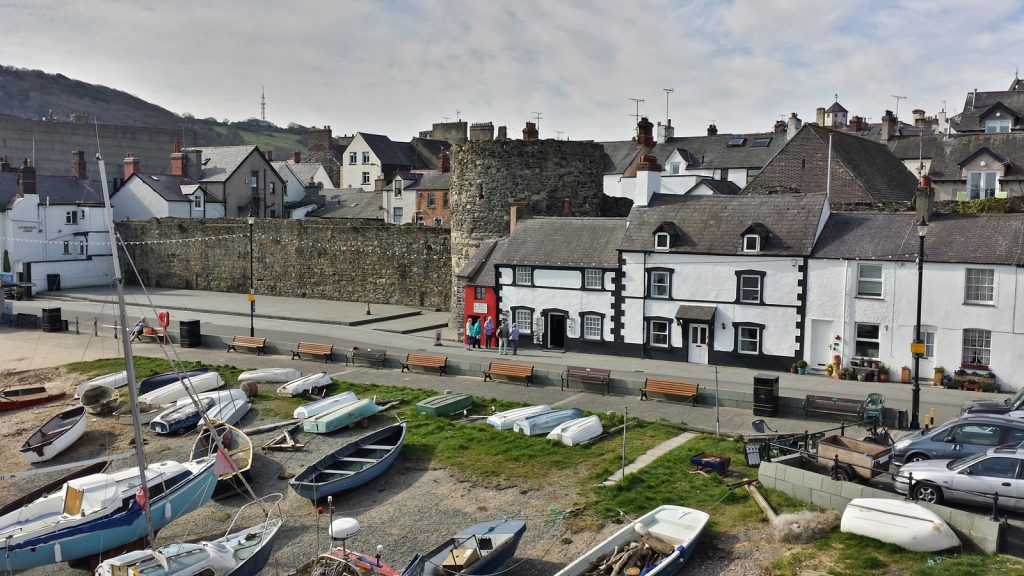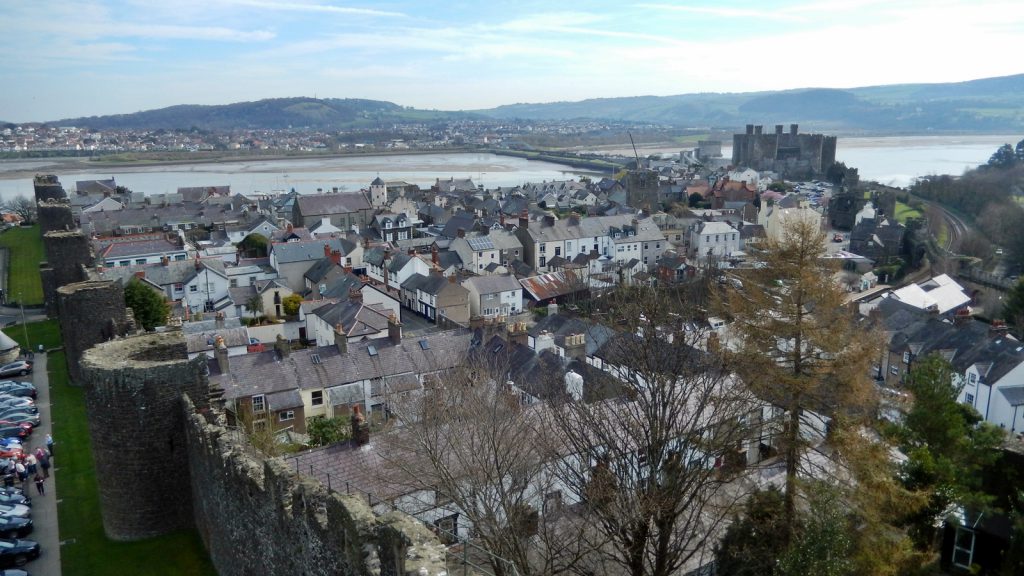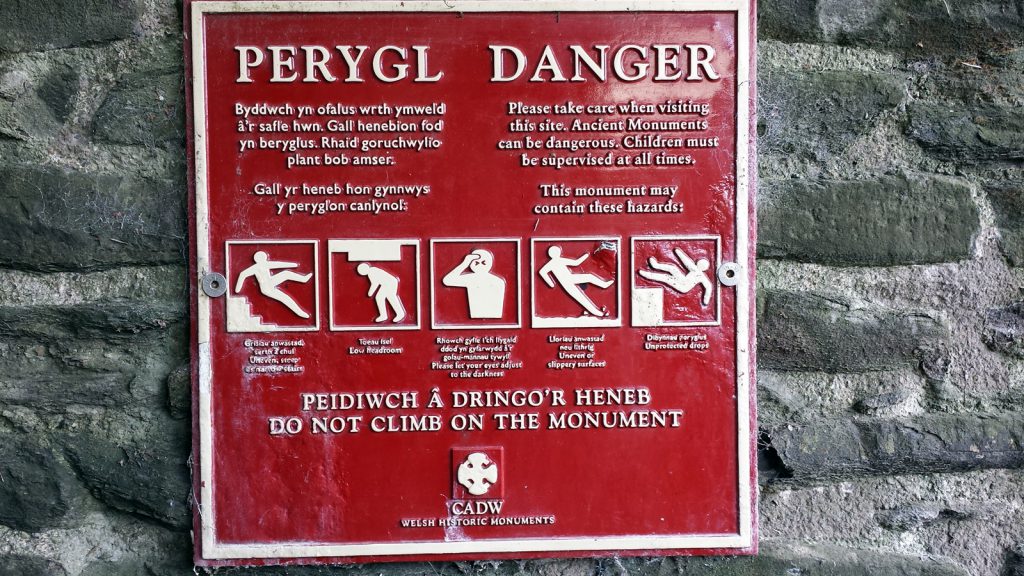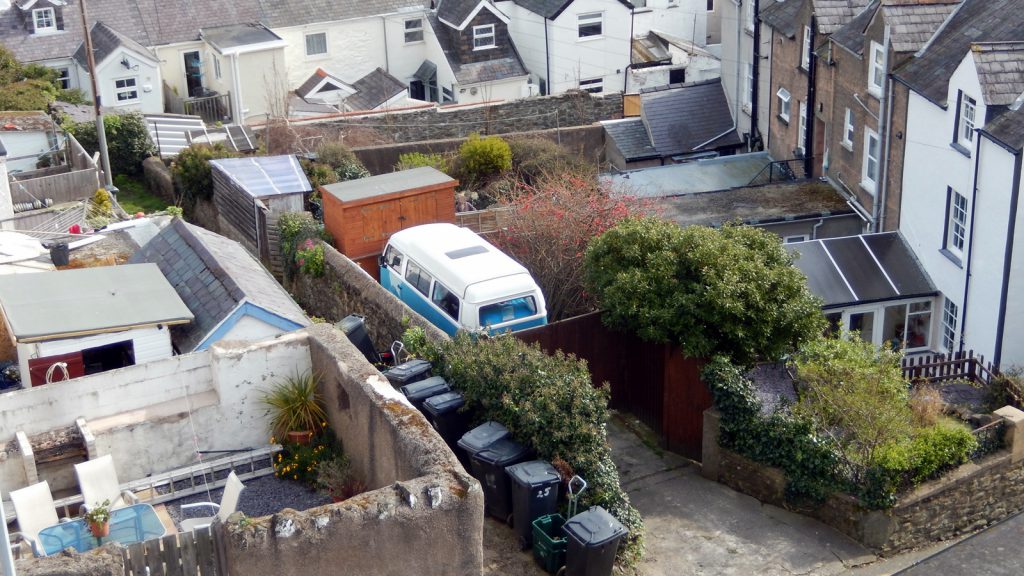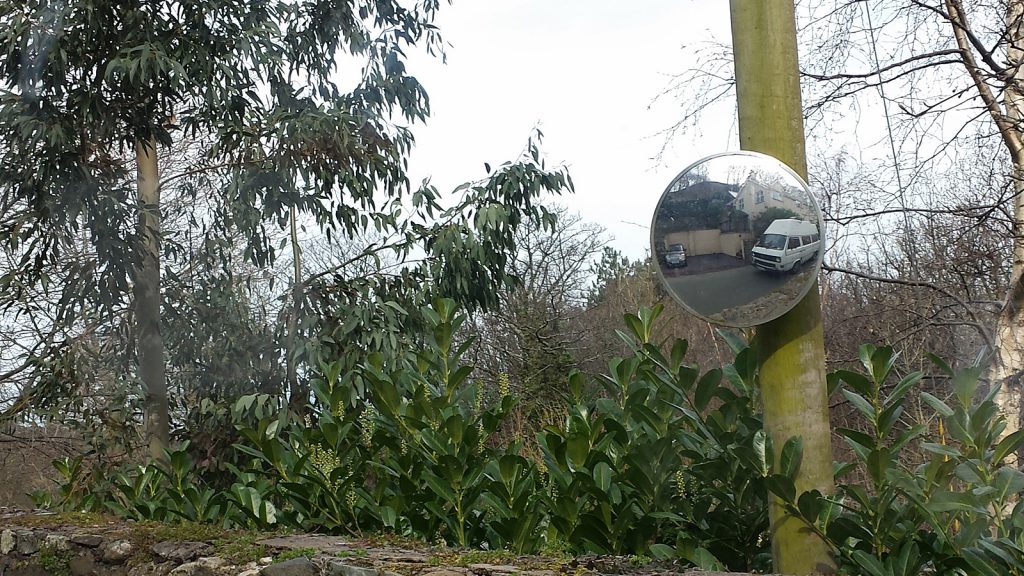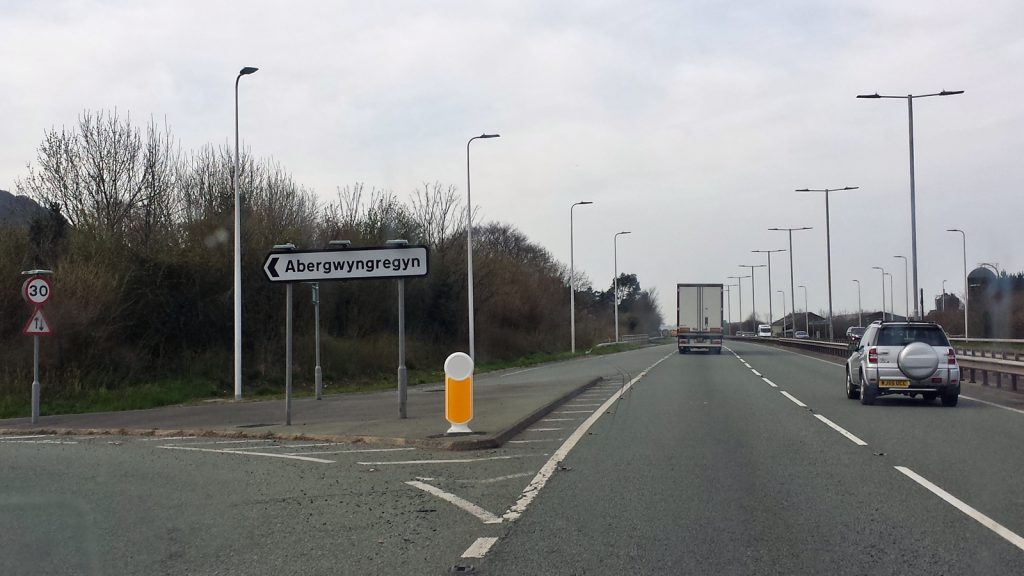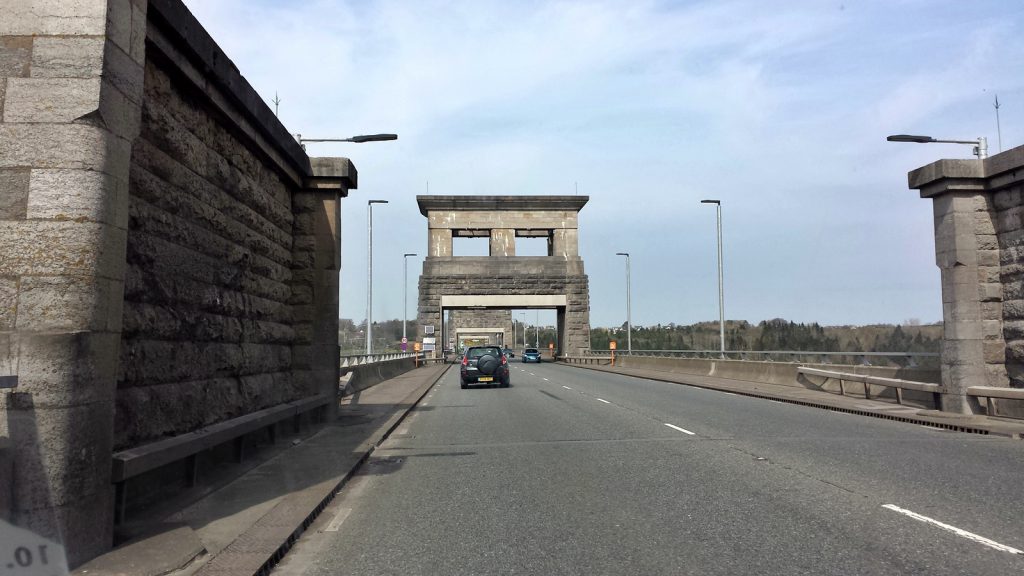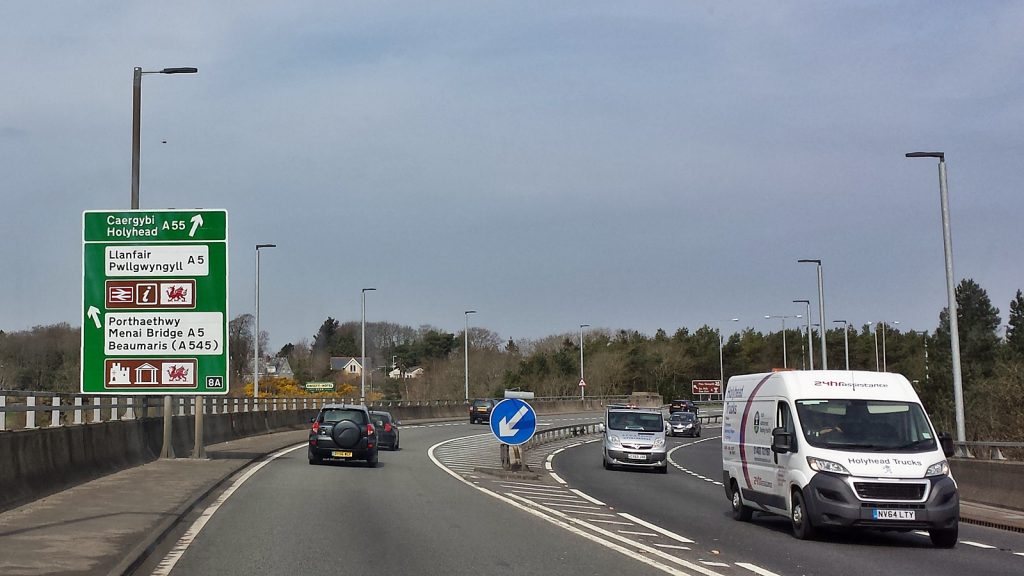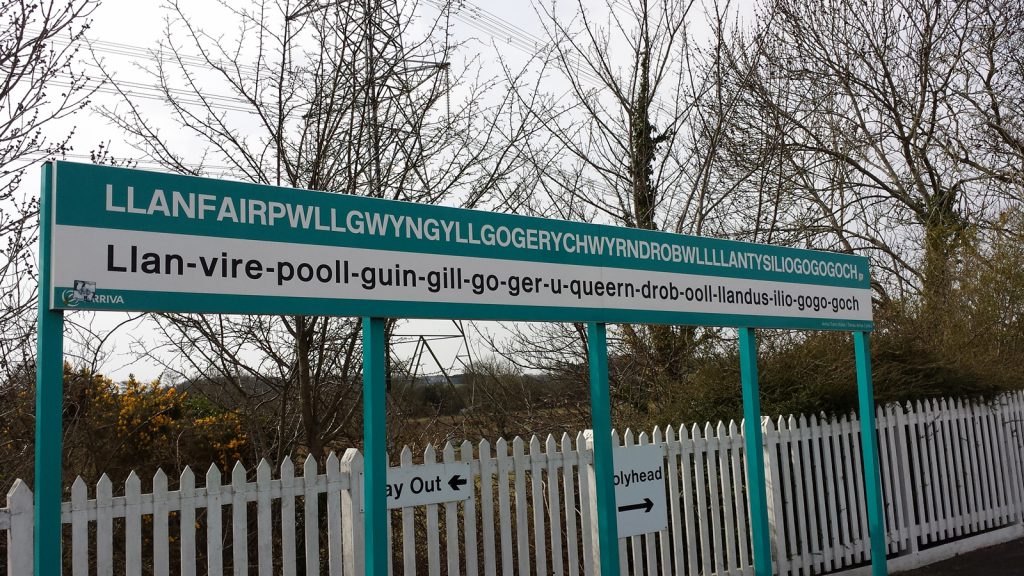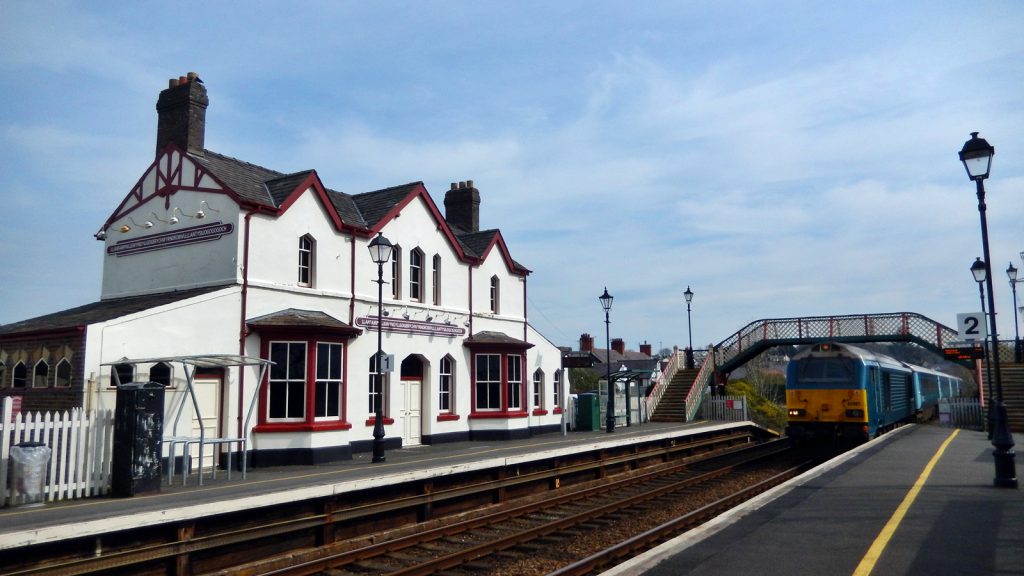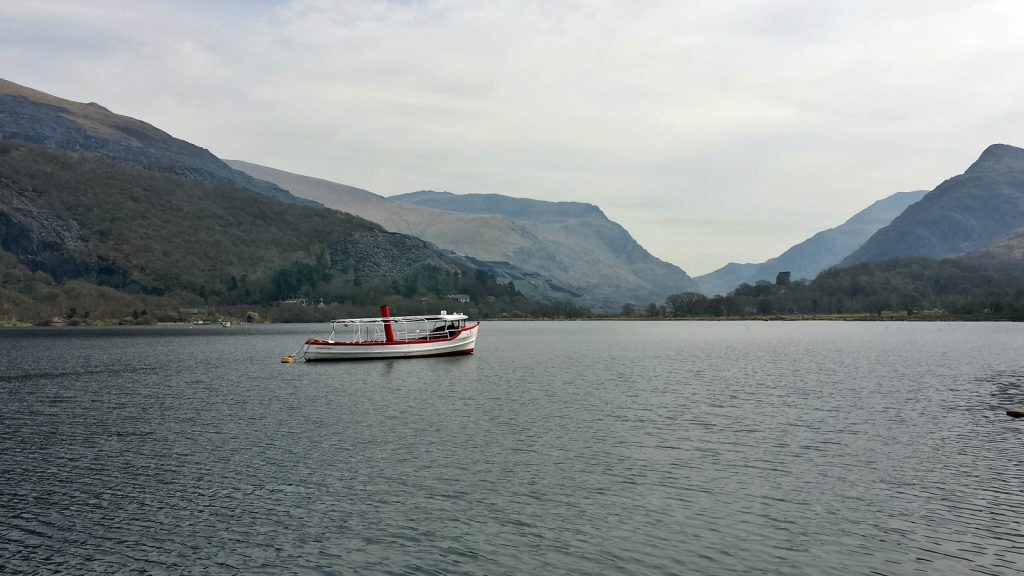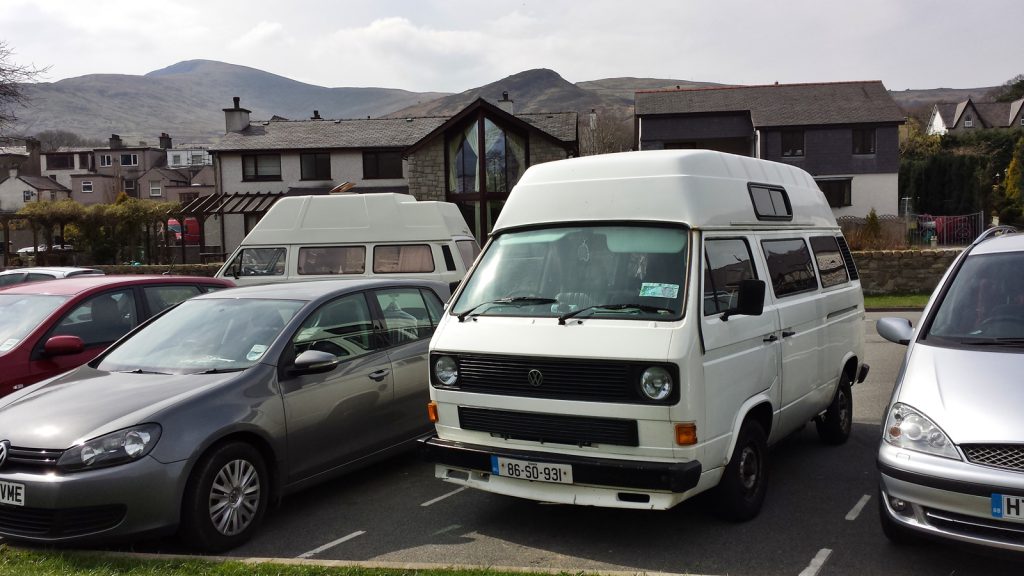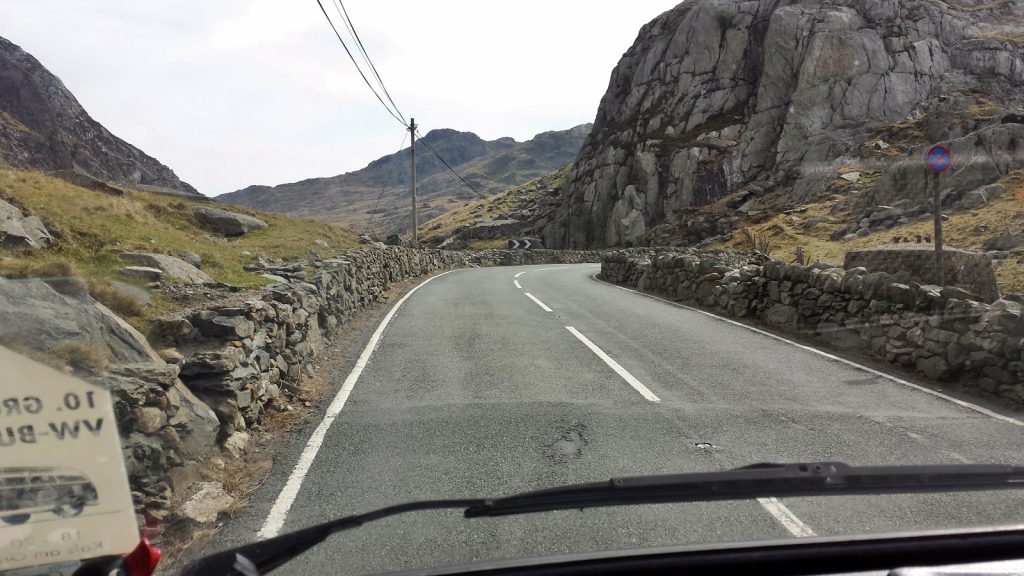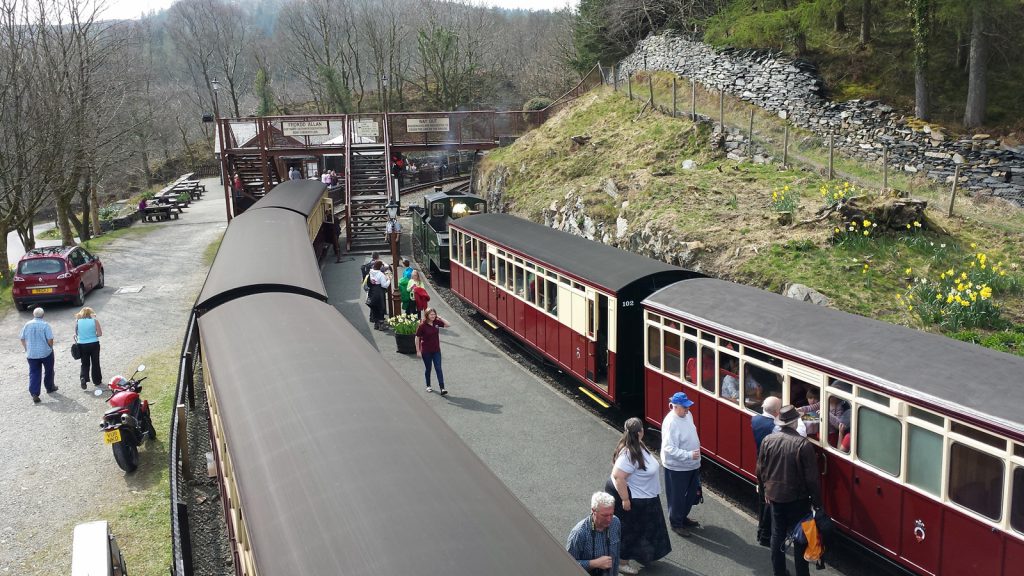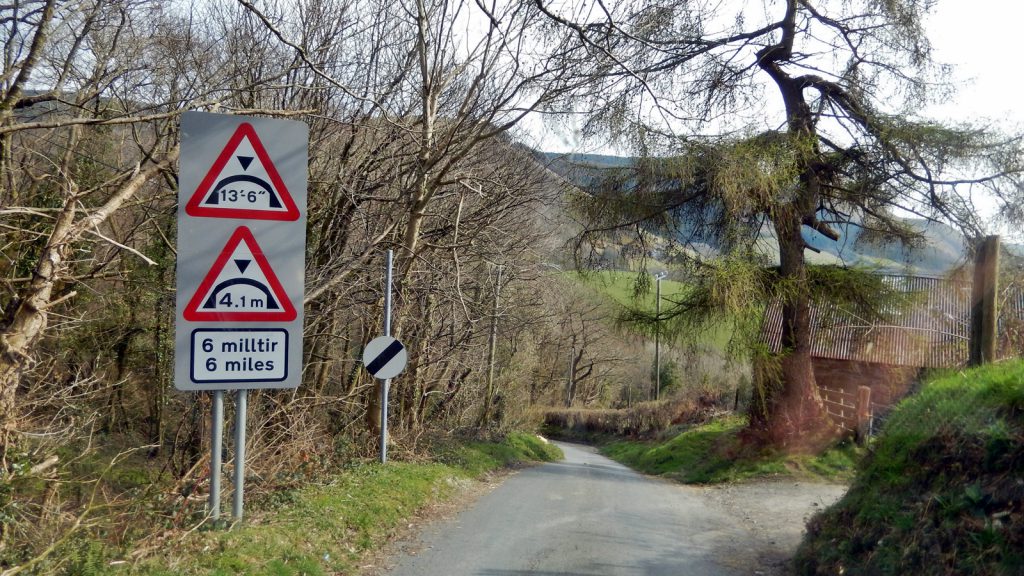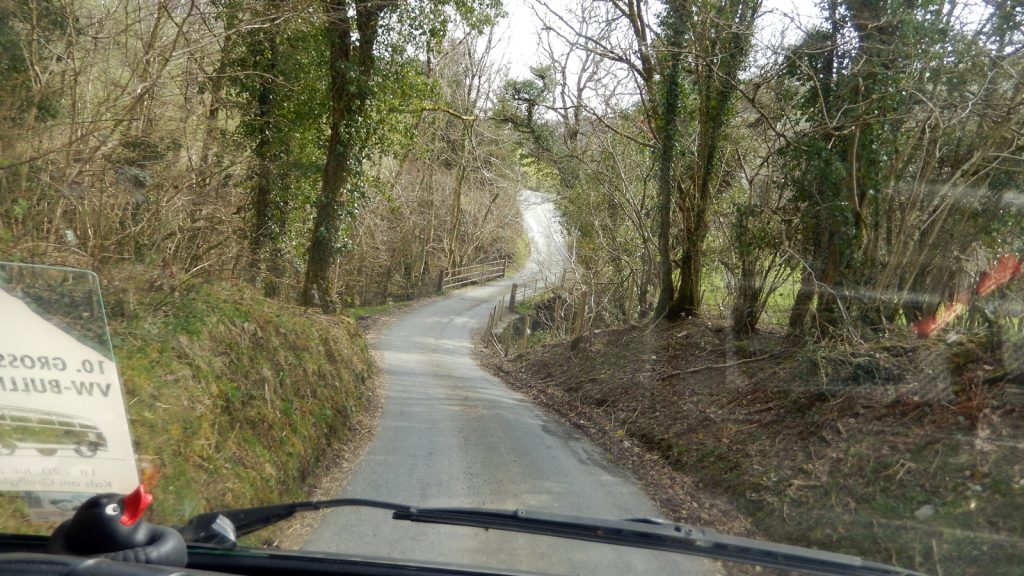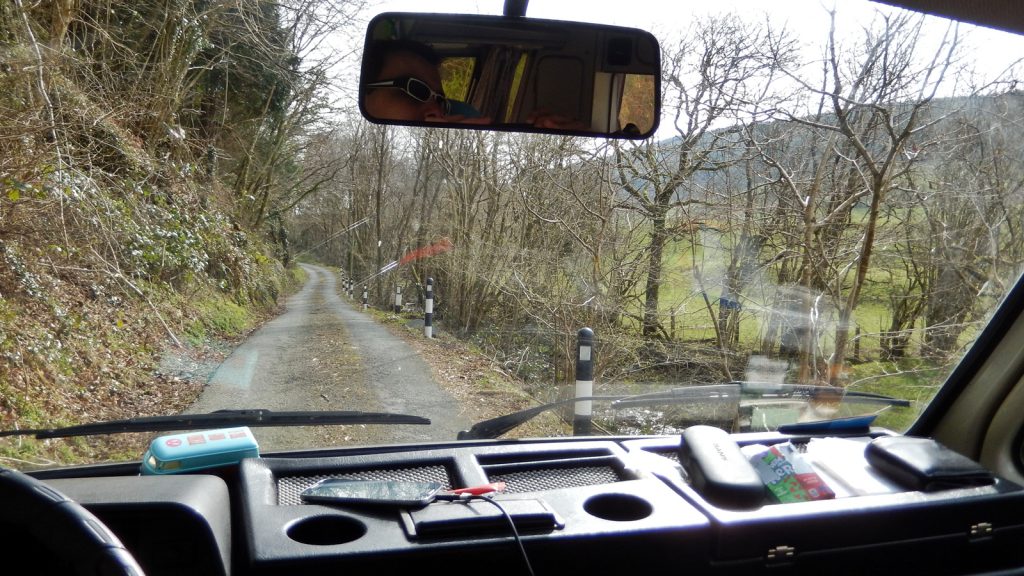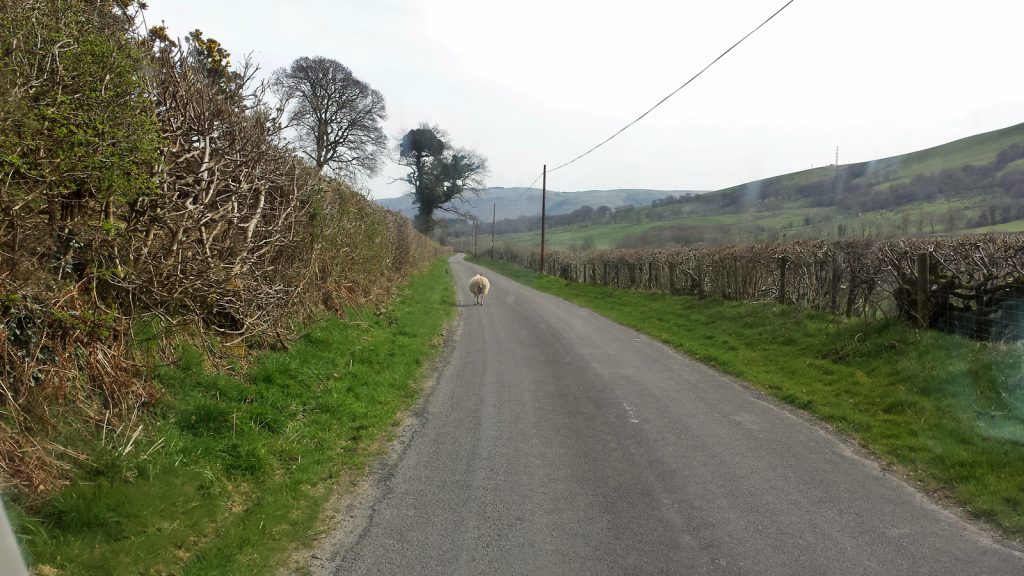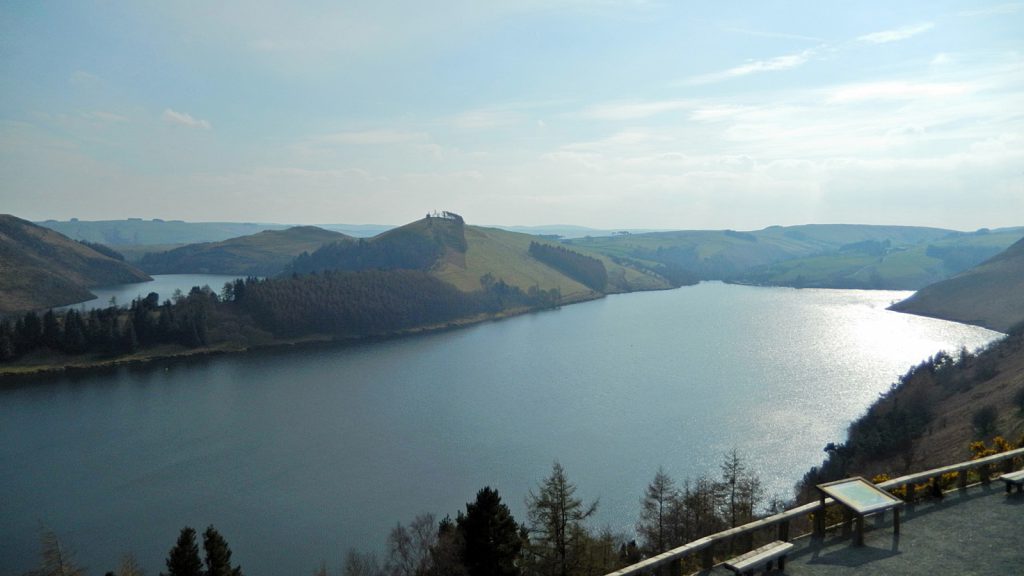Llanfairpwll
Wednesday, 08.04.2015
Today we could not really sleep long due to some bleating wool producers on the neighbouring lawn. But it was us who wanted to stay in the countryside, so it is not the sheep’s fault but ours. 😉
It looks as if it is going to become a sunny day, but in the morning it is still quite fresh which we finally realize inside the non heated sanitary building. We do not want to leave the hot shower anymore.
Luckily the son feels a bit better this morning and so we decide to have a stroll through the old fortified town of Conwy whose castle we have already passed along yesterday.
We park the Didimobile in the big visitor parking lot next to the completely preserved historic city walls and start a short walk around the town looking for a bakery.
After having stocked up our bread and breakfast supplies we continue down to the town’s harbour. It is low tide once again, many boats are sitting on dry land. Unfortunately The Smallest House has not opened yet, but it looks impressively tiny even from the outside.
We enter the city walls and walk once around the town, from the harbour towards the castle. From the wall you have wonderful views over the roofs of Conwy.
Interestingly the city walls can be walked on freely, only some warning signs alert you of possible hazards. One of those signs even shows the daily routine of some unlucky fellow.
We are slowly walking back to the Didimobile when we spy another VW bus in one of the tiny backyards from atop the city wall. You know, Britains and VW buses… 😉
From Conwy we continue our roadtrip along Conwy Bay, but instead of driving down the ordinary coastal motorway we take the scenic route over Sychant Pass.
The Welsh must be a people who loves to drink alcohol. Lots of alcohol. At least that is the only explanation we can think of for how they came up with their town names.
In Penmaenmawr we have no other chance than to take the motorway for some miles in order to reach Anglesey via Britannia-Bridge, built by railway pioneer Robert Stephenson. It is a two level bridge: The upper stone structure carries the motorway, the lower steal grid section carries the railway line across Menai Strait.
On the other side of the bridge there is the first signpost for a not-to-be-missed village on any Wales roadtrip, though only the short form is given here. We follow the A5 road to the left.
Llanfairpwllgwyngyllgogerychwyrndrobwllllantysiliogogogoch is the name of the village, which has even got a trainstation. Although only few daily trains call there, the station made its way into the Guiness Book of World Records due to the longest station name. At 58 lettres it is nearly double the length than Germany’s longest station name, Lübeck-Travemünde-Skandinavienkai (33 lettres).
Afterwards we are heading back to Snowdonia, this time along A-4086 road over Llanberis Pass. On the way we come along one of Wales’ largest natural lakes, Llyn Padarn (“Llyn” is the Welsh word for “lake” or “pond”).
During a short break at the shore of Llyn Padarn we meet a “relative” of the Didimobile, a white a T25 with a high roof. It comes from Ireland. For a tour of Mt. Snowdon, Wales’ highest mountain at an elevation of 1,085m, we unfortunately do not have enough time, but we will put it on a to-do list for a future tour.
Llanberis Pass reminds us of high alpine landscapes, although even for northern Germans like us it would rather count as a hill at an elevation of only 359m above sea level. We waive a longer pause although there is a parking lot at the summit of the pass, but the guard wants to charge a whole five Pounds even for a five minute photo stop.
In Tanybwlch a signpost for a café next to a heritage railway attracts our attention since we have not eaten anything since this morning. Coincidentially, two very narrow gauge trains of Ffestiniog Railway meet just in time of our arrival at the tiny station.
After a tasty lunch we head south a bit more rapidly. Maybe we will make it to near Bristol, some 200 kilometers away. Since we do not own a reasonable roadmap we make use of our google maps satnav with her nice, unfriendly and harsh voice.
The best in using google maps is that in England there is an overall speed limit of 60mph (96kph) on any country roads unless posted otherwise. And since there are hardly any private or restricted roads, the google maps lady knows some really adventurous “shortcuts”.
We make good progress on well developed A-470 road until the satnav lady comes up with the idea to cut a 12-mile-bypass short via a C- or D-road with a number even she does not know. So she just harshly commands us, “turn right in 400 meters!” No crossroads visible. “Turn right in 200 meters!” Still no crossroads in sight, but we could slowly slow down a bit. “Turn right here!” And indeed, between two hedges there is a lane. We would not call that “road”. We make a turn and look at each other, puzzled.
We drive down that path for some meters when the google maps lady suddenly squawks, “Follow the road for twelve kilometers!”. She is serious about this!
That’s why I don’t like satnavs. They indeed know a lot of things, for example the maximum speed limits. That the poor Didimobile would immediately fall apart if it even went nowhere near 60mph on this road she obviously does neither know nor care about.
The next problem on this single lane road shall not be the non existent (oncoming) traffic but a rather animal-like one: A sheep. Somehow the walking ball of wool has managed to finde a gap in the dense hedges and to get from it’s pasture onto the road. Unfortunately it does not seem to find its way back and is therefore blocking our way until it spots the Didimobile. Frightened it puts some excrements onto the road and starts running in front of us instead of running into the hedges to the left or right of the road. There is no chance of getting out of the other’s way, neither for us, nor for the poor creature. It would only have to move aside, run past us or something like that. Even the youth firefighter’s courageous attempt to catch the animal fails miserably. Thus we drive the poor sheep in front of us for a good kilometer until it finds an opportunity to move aside far enough. 🙁
Eventually after a few more miles we encounter a B-road again. Although it winds around rolling hills it allows for faster speeds than the small single lane road before. At Llyn Clywedog, a water reservoir ensuring the fresh water supply of the English Midlands and further down to Birmingham, we do another short break at summery weather.
At Brecon Beacons National Park we finally find a somehow remote campsite where we are going to spend our last night in Wales.


